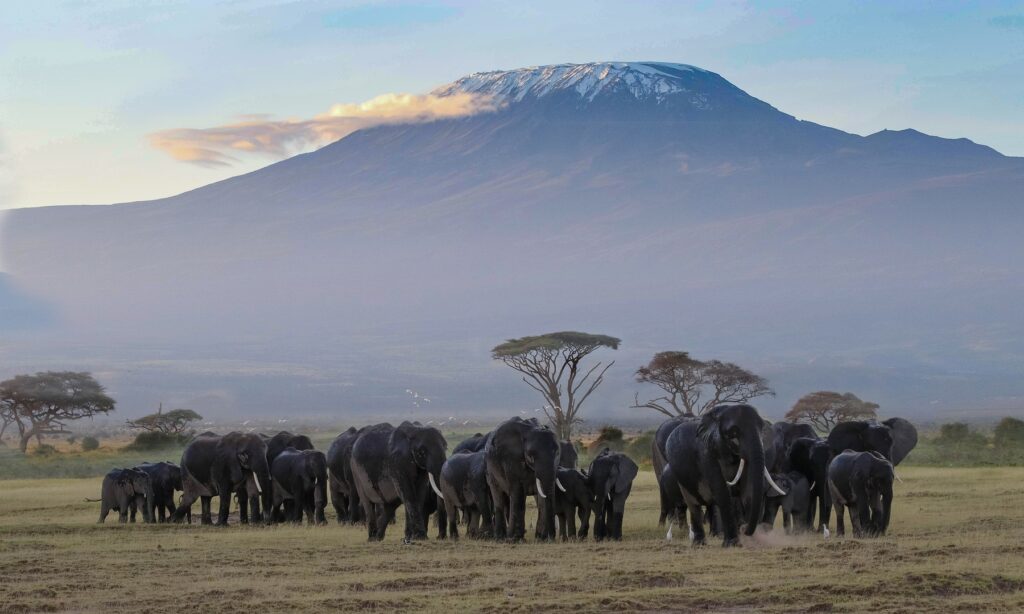You probably know that the tallest mountain in all of Africa is Kilimanjaro – but did you realize that in spite of being nearly on the equator, it has glaciers?
Fire and Ice
Kilimanjaro is a volcanic mountain situated in northeastern Tanzania. Rising above the iconic African savanna, its slopes are robed in zones of rainforest, moorland, and arctic scrub desert before being crowned with snow and ice. Over 5,000 meters (5,895, actually – that’s 19,340 feet) above sea level, this mountain is not only the tallest in Africa, it’s the world’s highest free-standing mountain and the tallest volcano in the Eastern Hemisphere.[1]
In fact, Kilimanjaro has not one but three volcanic cones: Kibo, the highest with Uhuru Peak being the highest point in Africa situated on the crater rim; Shira, the oldest and most eroded; and Mawenzi.[2] While Mawenzi and Shira are both extinct, Kibo remains active, though dormant.
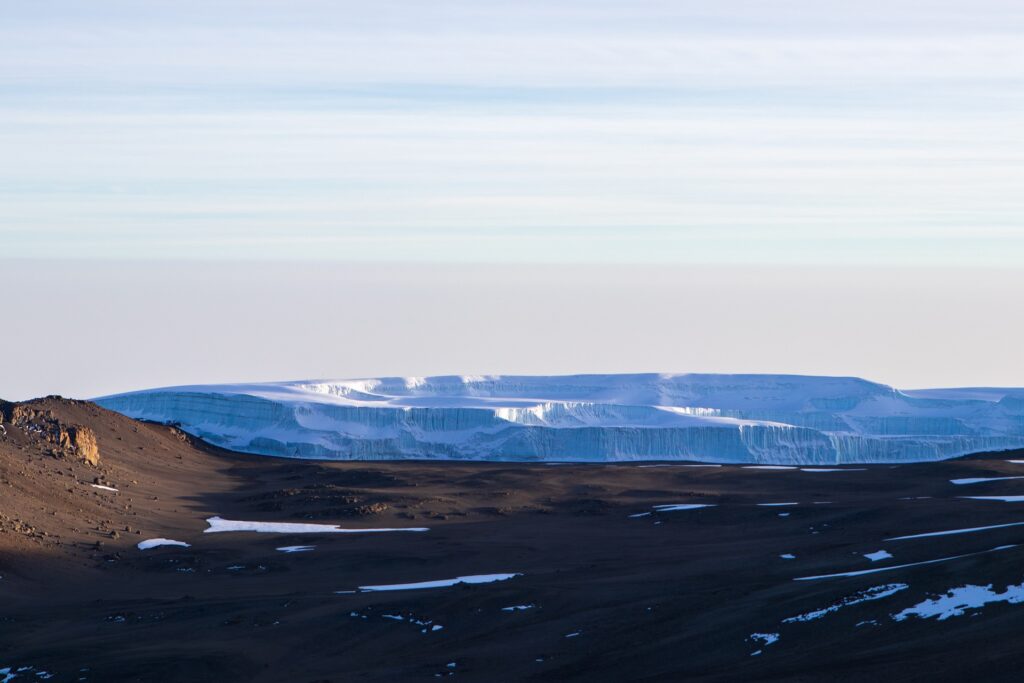
Even though there haven’t been any significant eruptions for a very long time, molten lava is still flowing only 400 meter beneath the top, according to research from 2003 on fumaroles close to Kibo’s peak.
While there remains molten lava underneath, above there resides the largest ice field in Africa. Like the number of peaks, Kilimanjaro has three ice fields – creatively named Northern, Southern, and Eastern – that reach an estimated 100 meters (328 feet). Hikers, tens of thousands of them from around the globe, travel to Tanzania each year to scale Kilimanjaro and take in the amazing views of these tropical glaciers and icefields.
Want to Know More?
Check out this United Republic of Tanzania article!
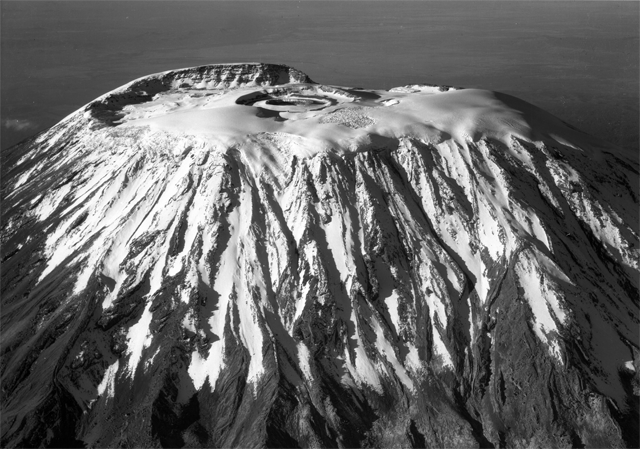
Kilimanjaro and Climate Change
Glaciers and ice sheets the world over have been melting in the face of climate change, and it is no different on Kilimanjaro.
Significant changes are being caused on Mount Kilimanjaro by climate change, including glacier retreat, reduced snowfall, shifts in vegetation, and water scarcity.
– John Baron, writing for XPATS International
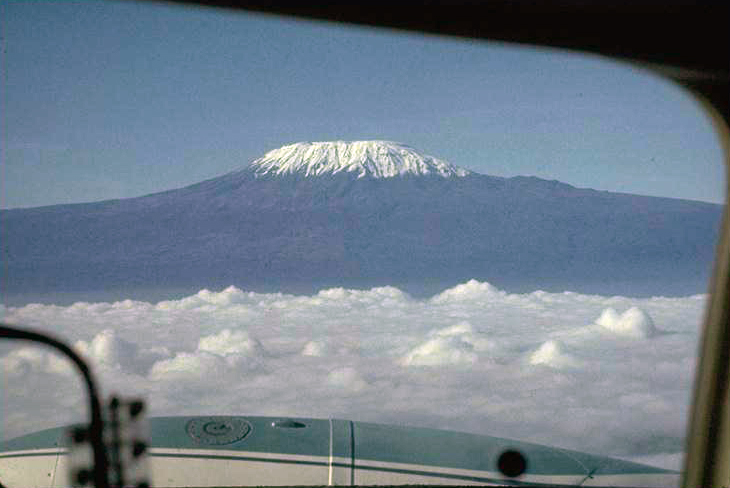
While there certainly are glaciers on Kilimanjaro, they are rapidly decreasing. In fact, the ice coverage has shrunk by over 90% in the last century. The cause might surprise you, however. That’s because one of the Kilimanjaro glacial reduction’s greatest causes is not necessarily the rising temperatures – at least, not directly. As the glaciers continue to exist some 1,000 meters above the mountain’s freezing level, they are not melting because of increased temperatures. Rather, the changing weather patterns caused by climate change and global warming have stunted glacial regrowth on this famous volcano.
Glacial Retreat
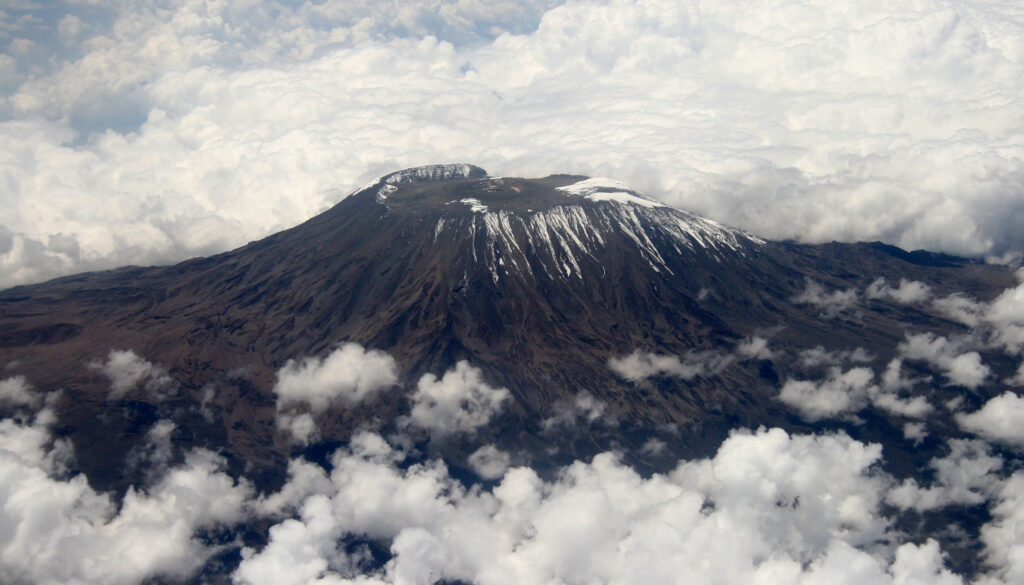
Did you know that even in steady, below-freezing temperatures, inches of snow can disappear in a manner of days? This is due to a process called sublimation (or the transition from a solid state to gas without passing through a liquid state), and it happens to glaciers, too. In fact, the sublimation of an ice droplet is just as quick as the evaporation of a drop of water! [3] When it comes to the glaciers, this process occurs when the air is very dry and at sub-freezing temperatures – they literally transform into vapor and are carried away by the wind.[4] But this process, while only recently studied and understood, is a natural one that has always taken place. Except now changing weather patterns have resulted in less precipitation and more drought. So, while the glaciers continue to drift away on the wind, they are not being replenished as they once were.
Want to Know More?
Check out this Africa Geographic article!
[1] https://en.wikipedia.org/wiki/Mount_Kilimanjaro
[2] https://www.ultimatekilimanjaro.com/mount-kilimanjaro-highest-mountain-in-africa/
[3] https://phys.org/news/2018-10-sublimation-solid-ice-quickly-evaporation.html
[4] https://geoscience.blog/the-surprising-role-of-sublimation-in-glacial-ice-mass-balance-an-energy-balance-perspective/#:~:text=In%20the%20case%20of%20glaciers%2C%20sublimation%20can%20occur,vapor%20and%20be%20carried%20away%20by%20the%20wind.
